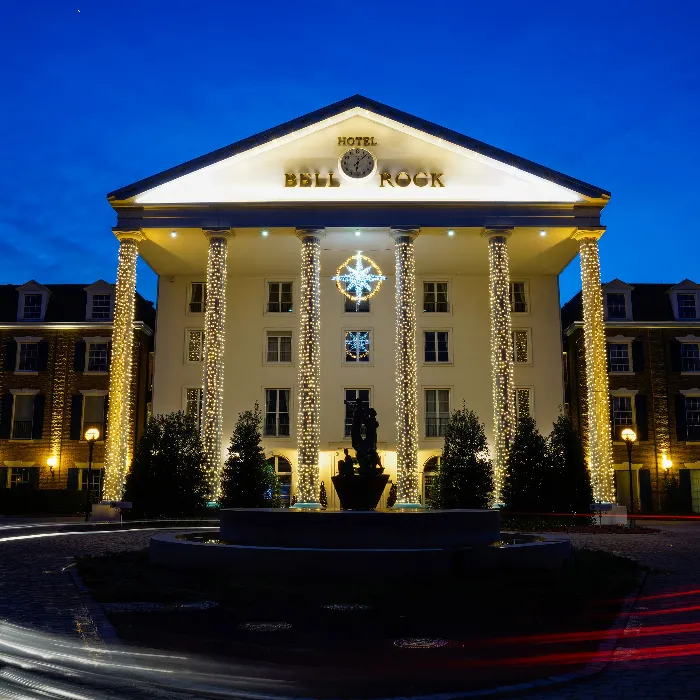The blue hour is a magical time for photographers. The combination of soft light and the onset of night blue creates a special atmosphere that is excellent for hotel photography. If you want to effectively utilize the shots of a hotel building, you should know how to achieve the best results in this brief time span. Here is a detailed guide to help you.
Key Insights
- Utilize the blue hour to experiment with different camera angles.
- Be mindful of converging lines and integrate them into the composition.
- Exposure corrections can significantly enhance the overall image.
- Close-up shots are just as important as the overall view of the building.
- Try to make the water in your shots appear flowing.
Step-by-Step Guide
To create the perfect shot of the hotel during the blue hour, follow these steps:
You start by capturing the front view of the hotel. It is important to have the hotel building well within the frame so that viewers get a comprehensive impression. Make sure that the sun is well-positioned in the background.
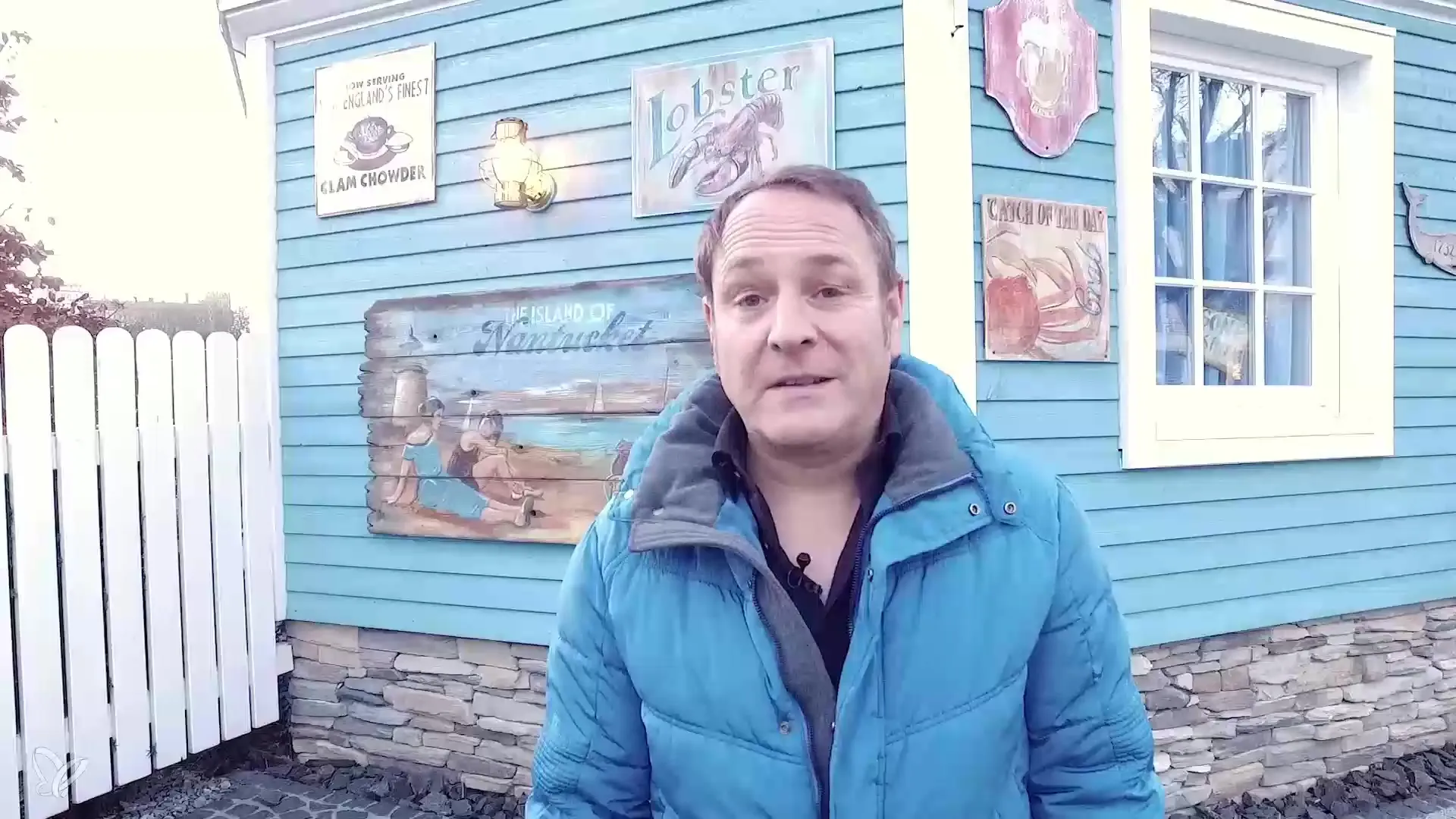
Once you are satisfied with the front shot, move to the back of the building. Here, the lighthouse is an excellent element you can capture. Make sure to position the camera correctly to include the lighthouse and the hotel in the frame.
Now it's time for your first test shot. The lighting conditions change quickly, so it's important to act fast. Experiment with the exposure. In this step, you can adjust the shadows and minimize the overexposed areas.
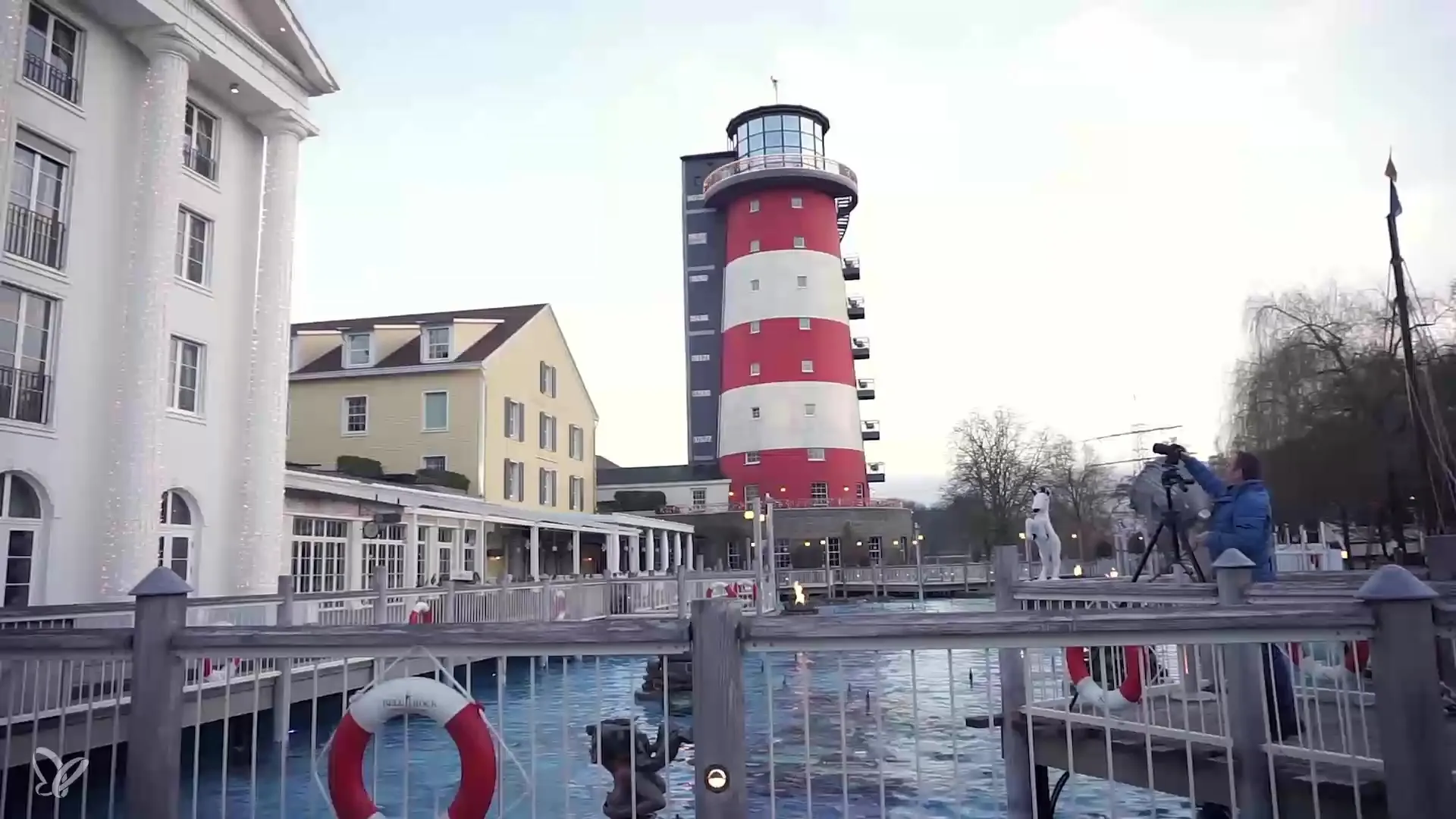
After the first test shot, you can experiment with different perspectives. Change the camera angle and try to find a new perspective that presents the lighthouse and the hotel interestingly. A new perspective can often lead to significantly improved composition.
It makes sense to get closer to the subject in order to capture the details better. This gives the image more depth and makes the main subject appear more pronounced. Note that converging lines can help you create a dynamic image.
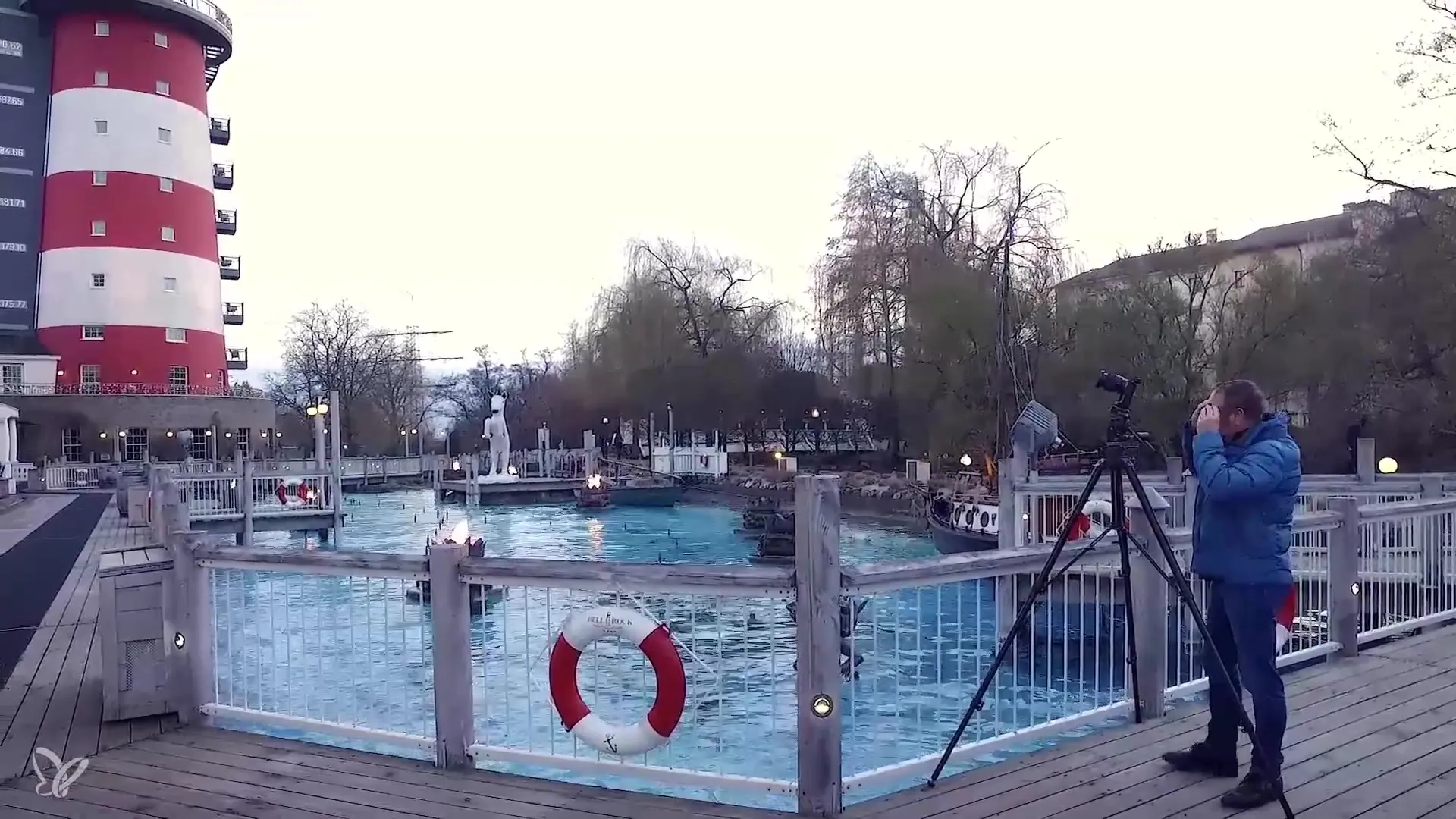
Another important point is capturing details of the hotel. Take a little break to specifically take shots of specific features of the building, such as rooms with views of the lighthouse. Use a small aperture setting here to capture more details.
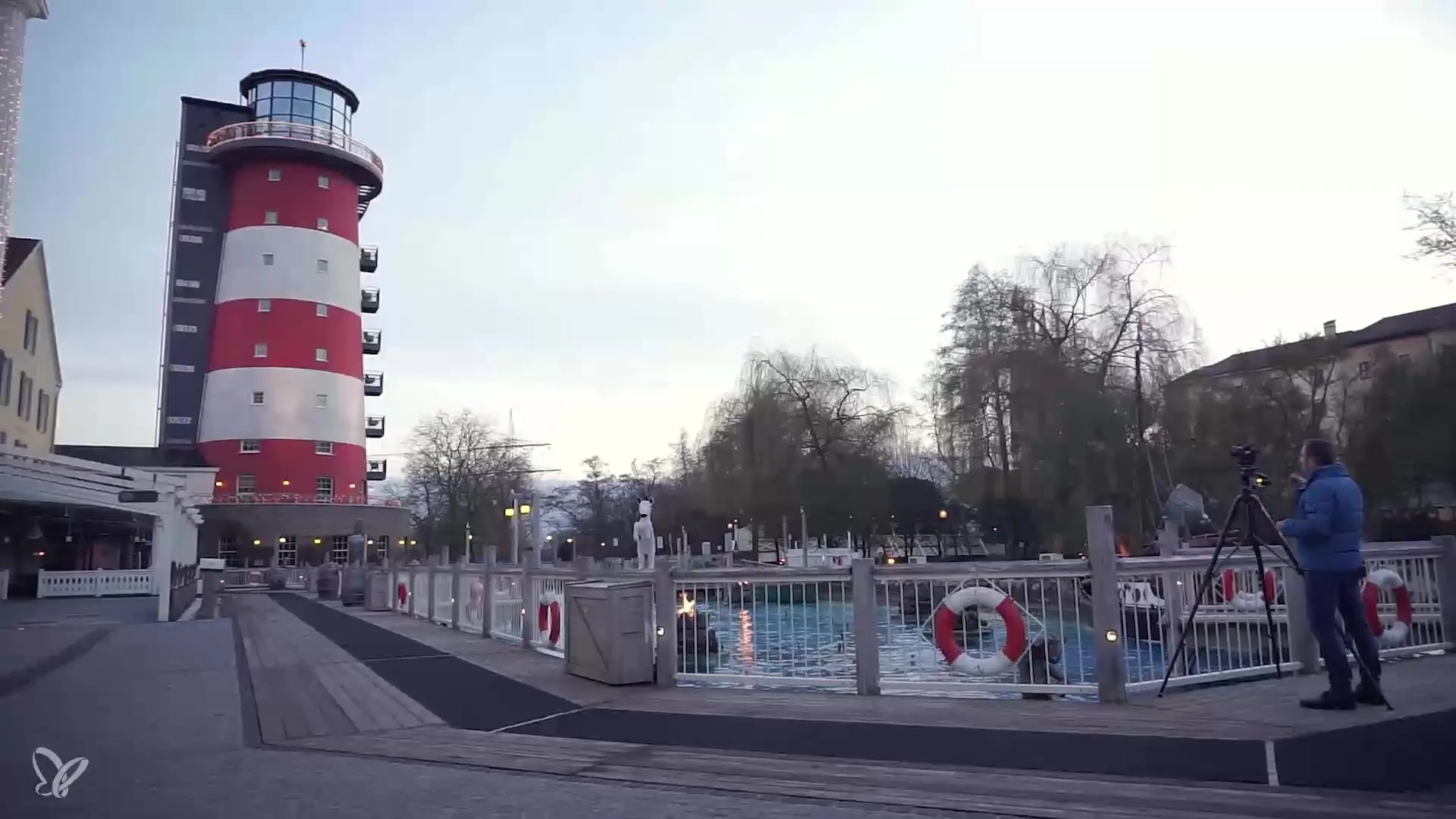
To give the water in the image a flowing character, set your aperture to 22. A longer exposure time ensures that the water appears soft and makes the image more vivid.
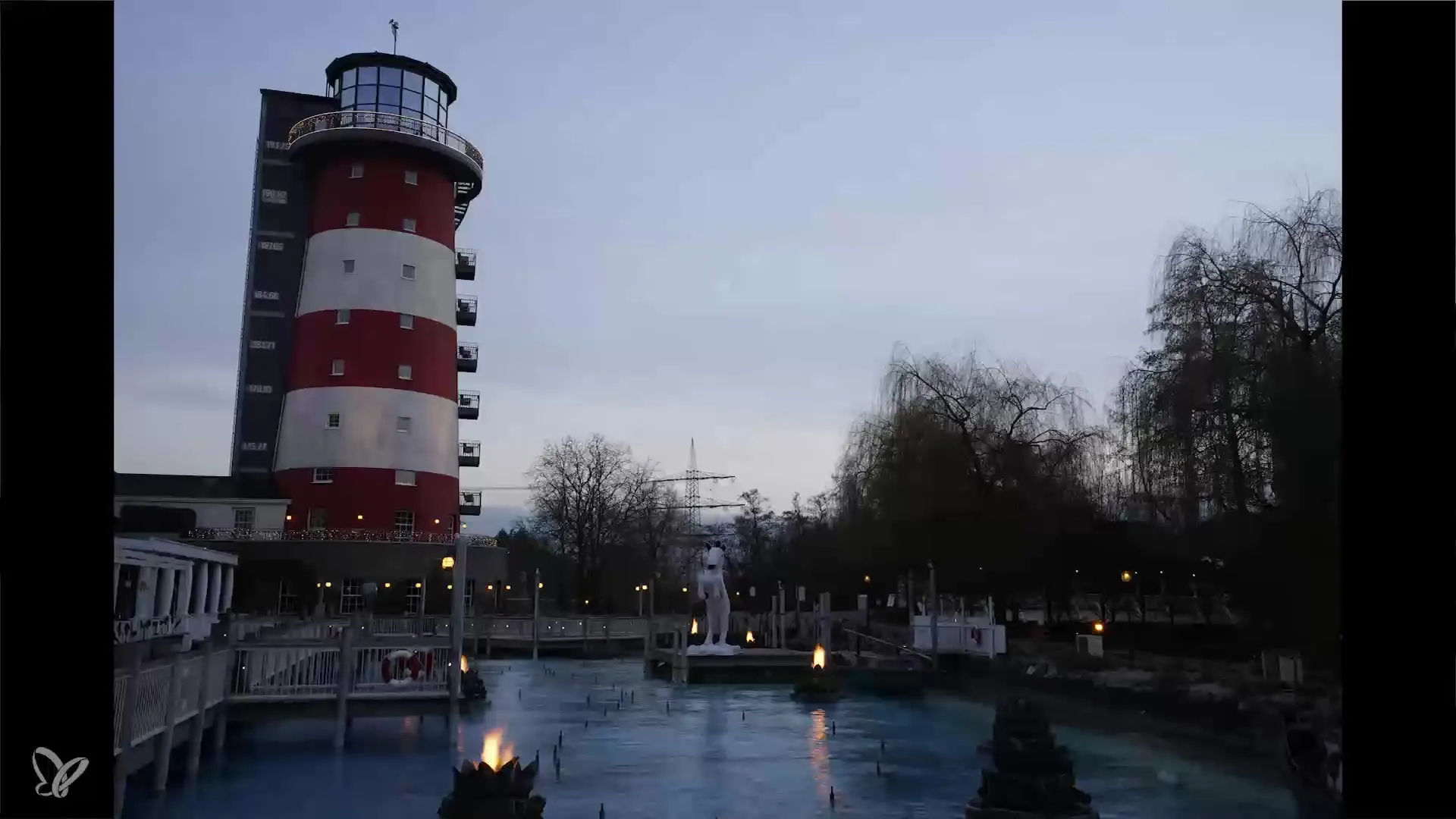
At the end, give yourself the freedom to take several shots of the same scene to pick the best one. Multiple shots can help you avoid a shaky image or one where someone is in the frame.
With these tips, you have wonderfully captured the rear view of the hotel and gathered a variety of perspectives and detail shots.
Summary – Hotel Photography: Techniques, Subjects & Practice – The Perfect Shot during the Blue Hour
In this guide, you have learned all the important aspects of hotel photography during the blue hour. Pay attention to the lighting conditions, experiment with perspectives, and use targeted settings on your camera to achieve the best shots.
Frequently Asked Questions
How important is the blue hour for hotel photography?The blue hour offers a unique light ideal for atmospheric shots.
What camera settings are best for the blue hour?A small aperture and a longer exposure time help capture the mood of the blue hour.
How can I incorporate converging lines into my images?Converging lines can be used to add dynamism to the image by consciously choosing the camera angle.
Should I take many shots to select the best one?Yes, multiple shots increase the chance of finding the perfect shot without disturbances.
What details should I pay attention to when photographing a hotel?Be mindful of architectural details, lighting conditions, and special features like lighthouses or gardens.
